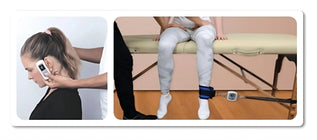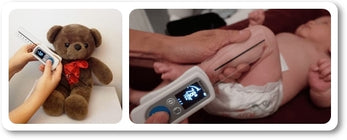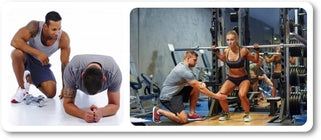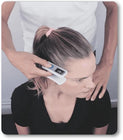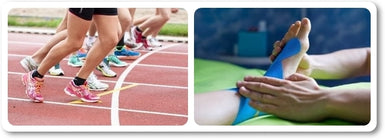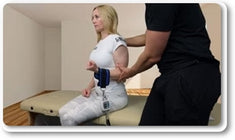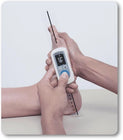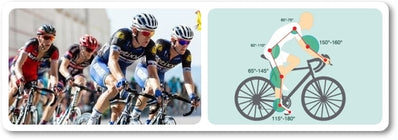Straight Leg Raise
Straight leg lift test reliability – The effect of dynamic stretching on muscle extensibility in female horse riders
Objective
Investigate intra- and inter-rater reliability of EasyAngle for measurement of passive straight leg raise to estimate the length of the hamstring muscle and to evaluate the muscle extensibility effect of a new dynamic stretching programme.
Straight leg raise study
Background
Stretching is commonly used in warm-up before physical activity. Presumably this reduces the risk for injuries and gives the body good preparation to perform. Dynamic stretching has shown to be a favourable method. Tight muscles are common among riders and several studies have shown riders to be oblique and unequal-sided, which results in an unequal burden of the load on the horse. In many sports the warming-up phase is very important and this is also the case in horse riding, although it is predominantly the horse and not the rider who gets warmed-up.
Straight leg raise study
Study Details
Authors – Emelie Brinkeback and Emma Lundqvist, Karolinska Institute.
Year of study – 2015.
Number of Subjects – 9 (all female) with no indications.

Purpose
The purpose of this study was to examine how dynamic stretching affect muscle length of hamstrings and iliopsoas in the rider and to study if the rider experience a better position in the saddle after dynamic stretching and in that case, how. of the straight leg raise study.
Method
This study is a quasi-experimental prospective study, with a control group, of totally 9 participants. The intervention lasted 6 weeks. The participants in the intervention group performed a dynamic stretching program prior to each ride. Measurements with the EasyAngle digital goniometer were done before and after the intervention to evaluate effect. Two physiotherapy students performed measurements and the intra-rater reliability of EasyAngle was investigated by comparing measurement results from two physiotherapists of the same method of measurement. Intra-rater reliability was investigated by having each physiotherapist to perform three measurements on the same patient on each occasion and comparing results. of the straight leg raise study.
Result
The present study indicates an improvement of the intervention group compared to the control group in aspect of passive straight leg raise (PSLR) in hamstring. A significant difference was seen in PSLR left leg between the groups, p=0,041, and in the intervention group, p=0,026. Three of 5 participants in the intervention group also felt that their position in the saddle had improved. The study showed excellent inter-rater reliability as well as excellent intra-rater reliability for measurement of straight leg raise.
Conclusion
The present study indicates that dynamic stretching may have some effect regarding hamstring, but given the low number of participants this needs further investigation in a randomized controlled study with a greater number of participants.

